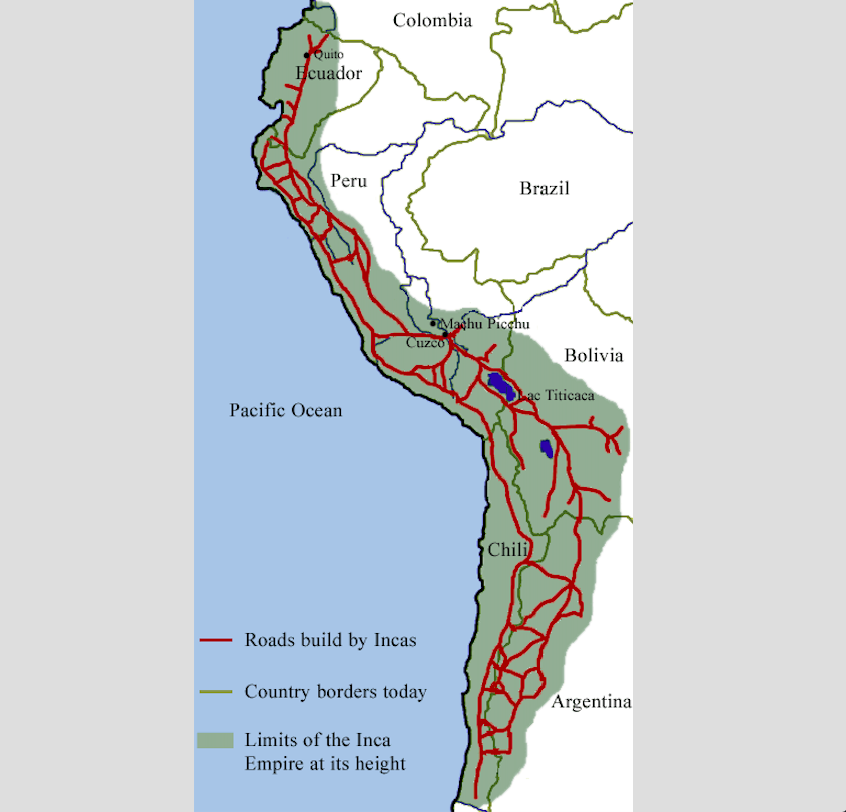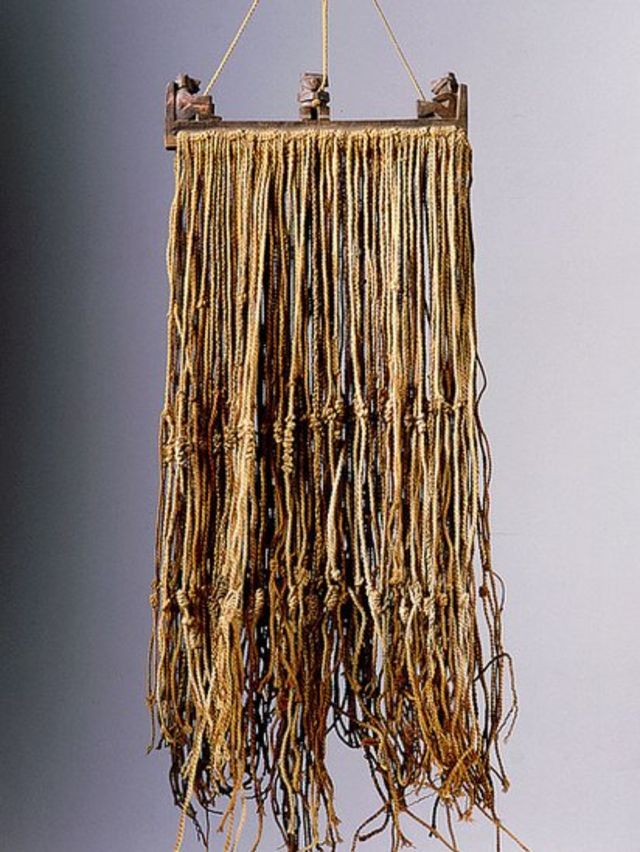The No-Pony Express
The No-Pony Express


The famed Inca Trail that climbs staircase after staircase to Machu Picchu is part of a 25,000 mile system of roads the Incas built called the Quapac Nan. Their empire was enormous. It ran almost the entire length of the Andes from southern Colombia through Ecuador, Peru, Bolivia and into Argentina and Chile. The Idea of the wheel hadn’t reached them or occurred to them. Horses arrived later, with the Spaniards. This left, during the pre-columbian Incan empire, llamas and feet as their primary means of transportation. The terrain of the empire was brutal- high, steep, rugged, muddy; deep canyons, raging rivers, snowy volcanoes, dense vegetation. But, they were prolific builders. In order to travel the expanse of their territory, they built one of the coolest roads the world has ever known. From top to bottom the “high”way stretched 3,500 miles, longer than the longest Roman road. There were two avenues: one along the spine of the Andes, one along the coast, with many connecting sections. Through the Andes, much of it was built with stone whereas along the coast much was flat dirt. Across those deep canyons and raging rivers, they strung giant rope suspension bridges. About every 6-9 miles, the Incas made resting huts called tambos, ranging in size from little stone houses to small villages.
 |
:max_bytes(150000):strip_icc()/Inca_Raod_steps_to_Machu_Picchu-60337dad568241ecaddc9b3c19fce6ae.jpg) |
Even with the road, due to the rugged terrain, the vast size of the empire, and the lack of wheels and horses, travel was arduous. Information had to move on the hard slow roads by foot as well. In an effort to transport information throughout their territory more quickly, the Incas then invented the coolest trail running profession the world has ever known. Meet the chasquis: hand picked athletic males were groomed from an early age to maximize their speed and endurance in order to serve as running messengers. They would be part of an empire-sized professional relay race team that delivered information and goods to every parcel of Incan land. They were like olympic postal workers
The job was 15 on 15 off. During their hitch, they lived in one of the tambos and were required to be ready at all times to relay messages from a chasqui up the road to a chasqui down the road. Their uniform was a light white tunic and sandals. They carried with them a man-purse called a chuspa to hold their delivery items, a weapon to fend off bandits, and a conch shell called a pututu which they trumpeted to announce their arrival to the next chasqui.
The Incas did not have a system of writing as we know it today. They had what are called quipus, which were sticks or ropes from which dangled elaborately woven strings with deliberately placed knots. Almost like a string atticus or a three dimensional binary code, the quipus originally recorded accounting information but evolved further to record non-mathematical messages which, unfortunately, no one alive today knows how to read. People called quipucamayucs were quipu specialists that “wrote” messages into these quipus and sent them via the chasquis to destinations on the road system. Because they were relaying the information from these quipus, the chasquis were also trained to read the messages embedded in the strings and knots.
 |
| A quipu |
The chasquis ran their chuspa filled with mail at a blistering pace over the rugged Inca trail to the next Tambo. Before they arrived, they would blow their conch shell. The next chasqui would tie up his sandals and get ready for his leg of the journey. The receiving chasqui would go backwards on the trail and run alongside the inbound chasqui so that the inbound chasqui could repeat any memorized messages enough times for the next chasqui to commit them to memory. The inbound chasqui would pass any goods (sometimes this included fresh fish from the coast) and any quipus to the next chasqui who would then aerobically red-line it to the following tambo. And so on and so forth. At this pace, messages and goods could travel 250 miles in a day. It took five days to deliver information from Cusco to Quito, a distance of 1200 miles on foot through the mountains.
 |
| A Tambo |
The Incas also used the road system to relay emergency messages via fire beacons much like the Beacons of Gondor in the Lord of the Rings which Pippin lights to alert Aragorn of the siege at Minus Tirith. A chasqui would light a bonfire which could be seen from a distance on the road. When the following chasqui saw the flames and smoke, he would light his bonfire, setting off a beacon chain reaction. The receiving Inca would summon an army and begin marching in the direction of the bonfire. They would meet a chasqui along the way who would explain the nature of the emergency.
To be a chasqui was a great honor. They enjoyed a high position in society and were not required to take part in the Incan work taxation like everyone else. No income tax? Come home from work already exercised? Read mystical string knot messages? Run the spine of one of the most beautiful and rugged mountain ranges on earth? The chasquis were on to something.



Comments
Post a Comment